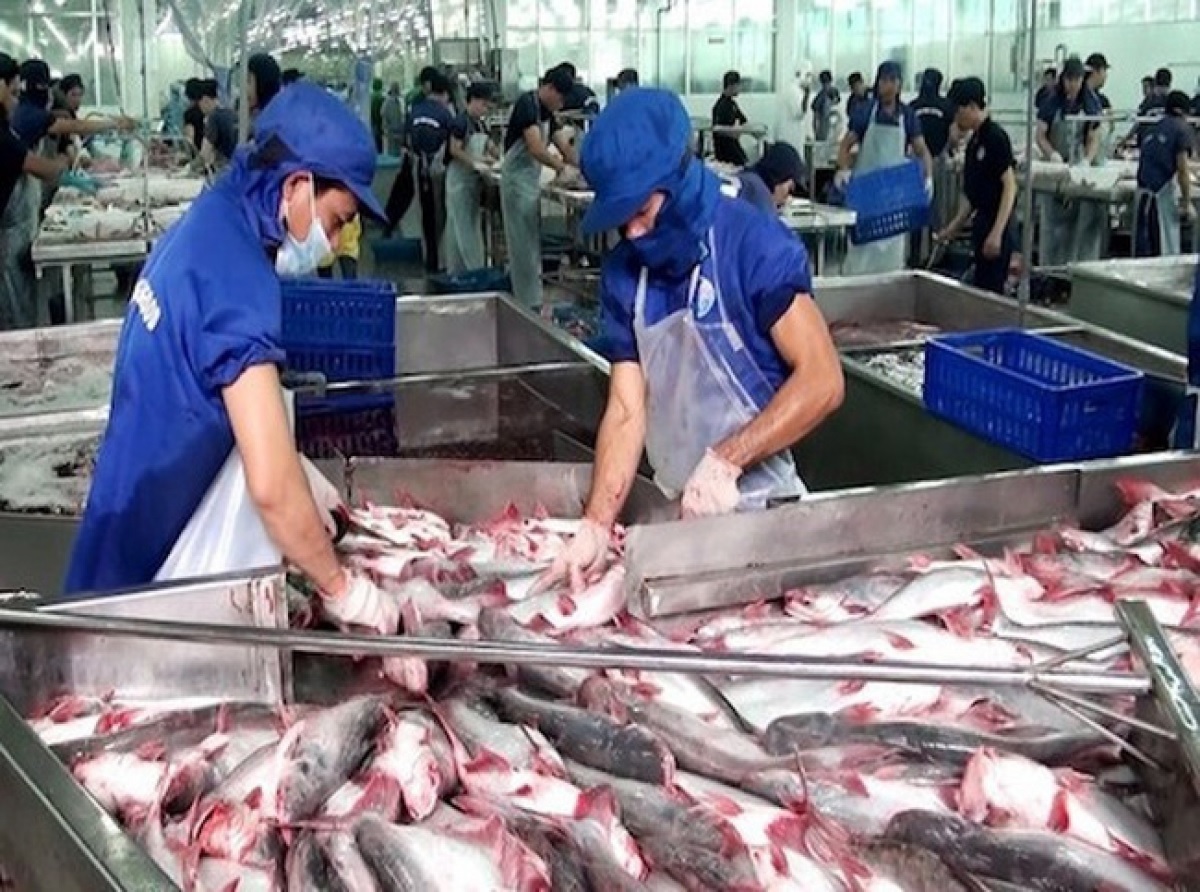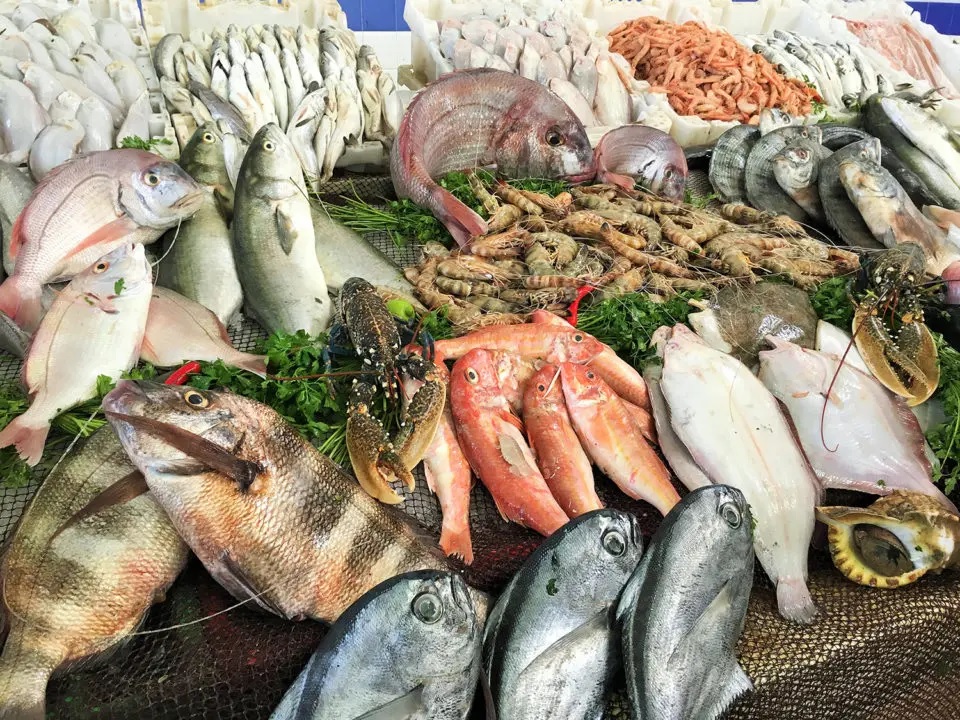(seafood.vasep.com.vn) The UAE imports around 250,000 tons of seafood/year, worth 750-800 million USD. The top 4 suppliers are India, Thailand, Norway, and Vietnam, with India holding a dominant market share of 20%-24%, primarily in frozen shrimp. Vietnam's share is 6%-9%, mainly in frozen pangasius fillets.
The most imported seafood products into the UAE are frozen whiteleg and black tiger shrimp, processed/preserved tuna, skipjack and Atlantic tuna, fresh/chilled Atlantic salmon, Danube salmon and other frozen fish like pangasius.
Following the general decline trend in the world market, Vietnam's seafood exports to the UAE in the first half of 2023 plummeted by over 50%, reaching more than 17 million USD. In which, exports of pangasius and black tiger shrimp all decreased by over 50%, whiteleg shrimp suffered the most with a staggering 73% decline.

Vietnam pangasius holds a prominent role in the frozen fish fillets segment in the UAE, accounting for 40-50% of the market share
Each year, Vietnam exports about 22-24 thousand tons of seafood to the UAE, with a value ranging from 50-70 million USD, showing that there is still a lot of room in this potential market. Especially in the frozen fish fillets segment (HS code 0304), Vietnam holds a prominent position as Vietnam’s pangasius products occupy 40-50% of the market share in the UAE.
However, Vietnam only ranked 5th in among main shrimp suppliers in this market. Vietnamese shrimp products face competition from India and Ecuador. India dominates the market with a significant share of 60%-70%, Ecuador holds 15% while Vietnam has a smaller share at 5%-7%.
The UAE is a net importer of seafood and the country imports up to 90% of its food consumption. A growing population, with diverse backgrounds, high incomes and growing demand for seafood are driving demand for aquatic products. Rapid urbanization, increasing disposable income and young people's preference for seafood protein along with tourism will definitely boost seafood consumption in this market.
The UAE consumes more than 220,000 tons of seafood/year and has a per capita seafood consumption of 28.6 kg/year, which is higher than the global average (FAO, 2021).
Almost 90% of the population of the UAE are immigrants and fish and seafood products are an integral part of the traditional meals. Furthermore, a study found that online searches for seafood products have skyrocketed in recent years, making seafood one of the fastest-growing proteins searched in GCC countries. Seafood products are considered healthy and people are reducing their meat consumption. The UAE is also one of the top destinations for premium seafood, and demand for lobster, scallops and other high-quality fish is on the rise.
Positive signal of UAE

The UAE is a net importer of seafood and the country imports up to 90% of its food consumption
The UAE's economic outlook remains positive, with GDP growing by 3.6% in 2023. Despite the geopolitical ramifications the global economy is currently facing, the UAE economy is poised for recovery, growth and prosperity in the second half of the year. Its successful economic performance has led to the UAE being named the world's largest economy - an innovation-driven economy. These positive forecasts will make the UAE a very promising destination for seafood exporters who are having difficulty in major markets such as the EU, the US, and China.
The UAE's progress in implementing comprehensive economic partnership agreements will help improve trade and integration into global value chains, which are important drivers of economic growth. Currently, the UAE has signed free trade agreements (FTAs) with many countries, including India, Malaysia, Singapore, New Zealand... India seems to have taken advantage of the tariff advantage in this market to increase its market share over the years.
Pangasius, tuna and other marine fish products imported into the UAE are the main products and are subject to a 5% tax rate. It is expected that this market will be more open to Vietnam's exported seafood products to this market if Vietnam can agree on the seafood import tax rate into the UAE to 0% immediately. However, besides the tariff problem, the most difficult thing for exporters to the UAE is the requirements of importers related to Halal certification - if this problem is concerned by ministries and businesses to overcome, Vietnamese seafood not only conquering the UAE market but also the potential Middle East region.
|
Top 10 Vietnam’s seafood products exported to UAE (USD)
|
|
Product
|
H1/2022
|
H2/2023
|
Change(%)
|
Proportion (%)
|
|
Total
|
35,332,031
|
17,503,111
|
-50.5
|
100.0
|
|
Pangasius
|
18,769,871
|
9,386,403
|
-50.0
|
53.6
|
|
Black tiger shrimp
|
4,452,072
|
2,059,686
|
-53.7
|
11.8
|
|
Tuna
|
1,896,059
|
2,049,510
|
8.1
|
11.7
|
|
Whiteleg shrimp
|
5,698,848
|
1,544,437
|
-72.9
|
8.8
|
|
Seabass
|
346,607
|
960,740
|
177.2
|
5.5
|
|
Anchovy
|
725,911
|
710,061
|
-2.2
|
4.1
|
|
Other shrimps
|
2,941,998
|
329,834
|
-88.8
|
1.9
|
|
Ornamental fish
|
88,308
|
128,941
|
46.0
|
0.7
|
|
Tilapia
|
6,225
|
66,494
|
968.2
|
0.4
|
|
Squid
|
68,246
|
60,706
|
-11.0
|
0.3
|